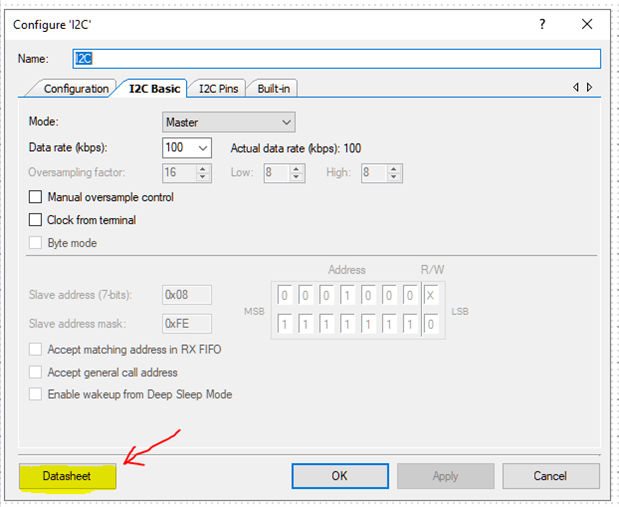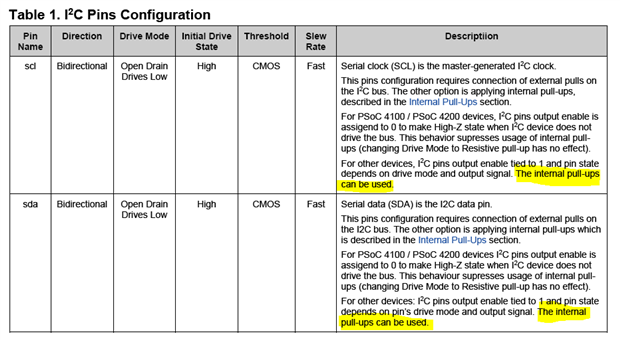Hello everyone !
I'm a new user to the CY8CKIT-042CY8CKIT-042. I'm trying to communicate this kit with a sensor via I2C protocol. To do this, I've connected the SDA and SCL pins of the sensor to the pin P4.0 and P4.1 of the CY8CKIT-042CY8CKIT-042. The next thing I need to do is configurate these pins P4.0 and P4.1 to a pull-up resistor to drive the SDA and SCL line.
I'm trying to do this in the PsOc Creator Software but I don't know how. Can anyone help me with this.
Thanks



